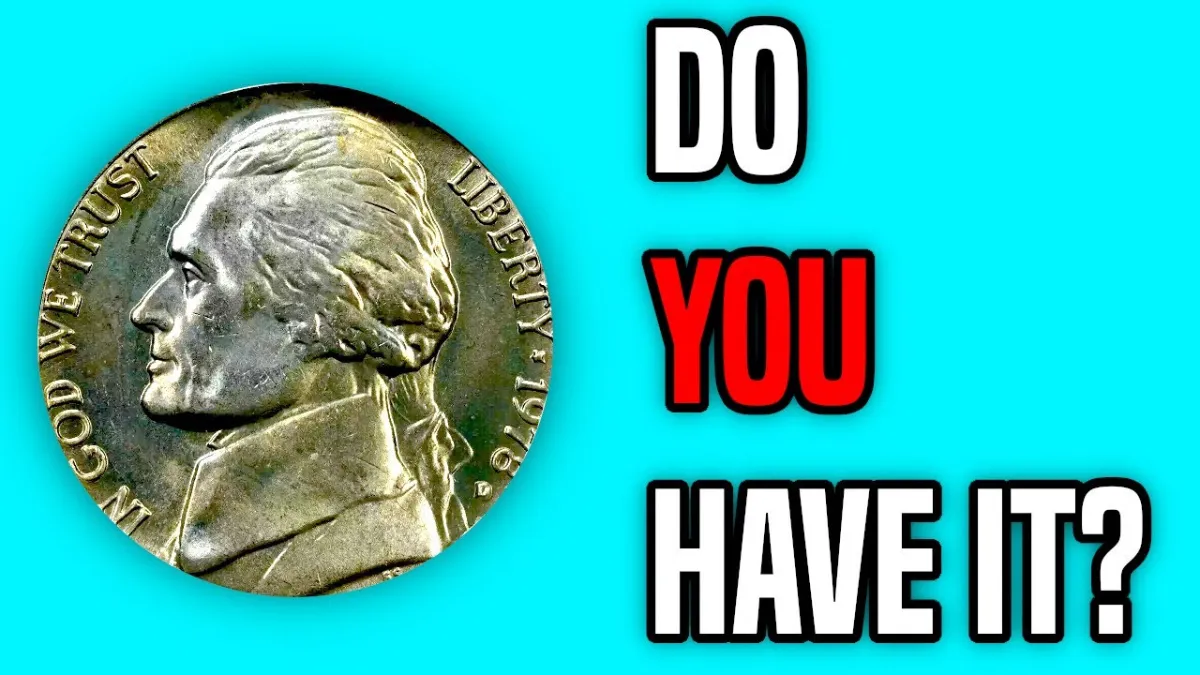That ordinary-looking 5-cent coin in your pocket might be worth far more than its face value — especially if it’s a 1978 Jefferson nickel. While most 1978 nickels are common, certain rare varieties, errors, and pristine conditions can make this coin highly valuable to collectors.
Let’s break down what makes a 1978 nickel potentially worth hundreds or even thousands of dollars, and how you can tell if you’ve got one of these hidden gems.
Quick Overview: The 1978 Jefferson Nickel
- Obverse (Front): Thomas Jefferson
- Reverse (Back): Monticello (Jefferson’s Virginia estate)
- Metal Composition: 75% copper, 25% nickel
- Mints:
- No mint mark = Philadelphia
- “D” mint mark = Denver
- “S” mint mark = San Francisco (proof coins only)
Over 585 million nickels were minted in 1978 — but not all were created equal.
Why You Shouldn’t Spend Your 1978 Nickel Just Yet
Here are the key reasons a 1978 nickel might be worth much more than 5 cents:
1. Rare Mint Errors
Mint errors can drastically boost a coin’s value. Some examples seen on 1978 nickels include:
Notable Error Types:
- Off-Center Strikes – If part of the design is missing due to a misaligned strike
- Double Die Obverse (DDO) – Doubling of numbers or letters, like “LIBERTY” or the date
- Clipped Planchets – Part of the coin is missing from the edge
- Die Cracks or Cuds – Raised lines or blobs caused by broken dies
Estimated Value:
- Minor errors: $10–$50
- Major errors: $100–$1,000+, depending on rarity and condition
2. Full Steps Nickels
One of the most sought-after features in Jefferson nickels is the “Full Steps” designation on the Monticello building.
What Are Full Steps?
If the steps at the base of Monticello are fully struck and clearly visible (usually 5 or 6 full steps), the coin receives a “Full Steps” grade by professional coin grading services.
Estimated Value:
- Regular strike: $0.05–$1.00
- Full Steps: $50–$500+, especially in high mint state (MS-65 and up)
- Perfect MS-67 Full Steps coins can reach $1,000–$2,000+
3. High-Grade Mint State Coins
Condition matters. A 1978 nickel that looks brand-new with no wear (known as uncirculated or mint state) is much more desirable to collectors.
What to Look For:
- No scratches, nicks, or signs of wear
- Sharp, clean details on Jefferson and Monticello
- Luster (original shine from the minting process)
Estimated Value:
- Mint State (MS-60 to MS-64): $5–$25
- MS-65 to MS-66: $50–$100+
- MS-67 Full Steps: $1,000 or more at auction
4. Proof Coins (San Francisco Mint)
The 1978-S proof nickel was made for collectors and sold in proof sets. These coins have a mirror-like finish and were struck with extra care.
Value:
- Average Proof: $1–$5
- Deep Cameo (high contrast): $10–$25+
- Error proofs or perfect PR-70: $100+
How to Check if Your 1978 Nickel Is Valuable
- Look for a Mint Mark:
- No mint mark = Philadelphia
- D = Denver
- S = San Francisco (proof only)
- Examine the Steps on Monticello:
Use a magnifying glass to count the steps. Five or more sharp lines = Full Steps. - Inspect for Errors:
Look for off-center strikes, doubled letters/numbers, or odd shapes. - Assess Condition:
Coins with no signs of circulation and original luster are the most valuable. - Get it Graded:
If you suspect you have a rare or high-grade 1978 nickel, send it to a professional grading service like PCGS or NGC for certification.
Final Thoughts
Most 1978 nickels may still only be worth five cents — but if you find one with a mint error, full steps, or in high uncirculated condition, it could be worth hundreds or even thousands of dollars.
Moral of the story: Check your change — you might be sitting on a tiny treasure.

